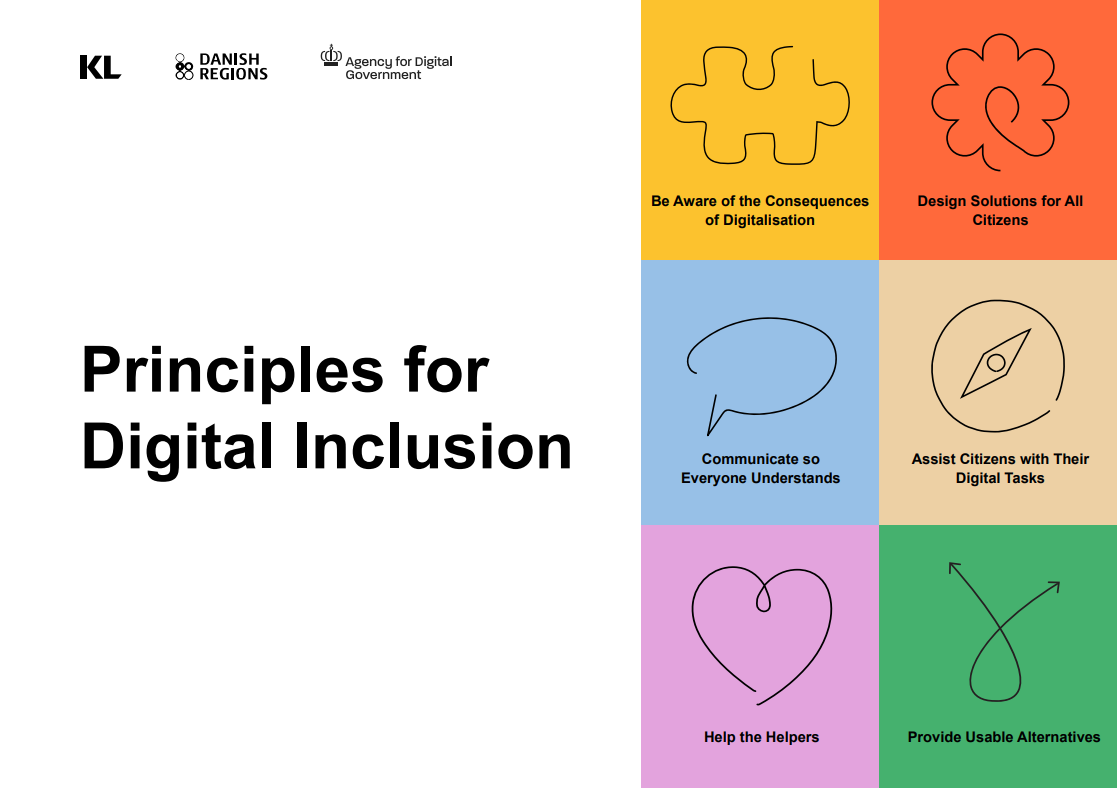Digital Inclusion
Regardless of the starting point of the individual, digital solutions and the public sector in general must be accessible to all residents in Denmark.
Most residents in Denmark are comfortable using digital technologies. However, some are challenged by the digitisation of society for different reasons, e.g. due to disabilities, lack of digital skills, reading difficulties or lack of knowledge about the organisation of the public sector.
Principles for Digital Inclusion
With six principles for digital inclusion, the Agency for Digital Government, Local Government Denmark and Danish Regions collectively set the direction for public digitalisation with consideration for all citizens.
The joint government principles for digital inclusion aim to promote responsible and inclusive digitalisation.
For Danish users, principperforinklusion.digst.dk provides specific tools, materials, cases and examples for each principle to support the work with inclusive digitalisation in a public organisation.
The principles are advisory and meant to assist authorities in their efforts towards inclusive digitalisation.
Download the digital publication 'Principles for digital inclusion' (PDF)
Targeted communication
The Agency for Digital Government takes special measures to ensure that digital services provided by the public sector are accompanied by targeted communication and assistance to people with special needs.
These measures include research and analysis, collaboration with stakeholders, issuing guides for digital solutions, and producing educational materials targeted at people challenged by digitisation.
An example of targeted communication – short animated films
Three animated films guide people challenged by digitisation through the digital solutions MitID, Digital Post and NemSMS.
The animations focus on everyday life and use common life situations to high-light the advantages of using MitID, Digital Post and NemSMS
Two Networks
Since 2015, the Agency for Digital Government has facilitated the Network for Digital Inclusion. Members count around 95 different organisations and authorities, both local and central. The main objective of the network is to support and enhance the possibilities of people challenged by digitasation to participate in the digital society.
In 2023, a new network aimed at authorities was established – the so-called Government Network for Digital Inclusion. The network consists of 70 different authorities ranging from central government departments over regional governments to municipalities. The main objective of the Government Network for Digital Inclusion is to strengthen the sharing of knowledge and experiences concerning digital inclusion across authorities.
Monthly newsletter
Every month, the agency issues a newsletter on digital inclusion particularly targeted at different organisations and central and local government authorities.

